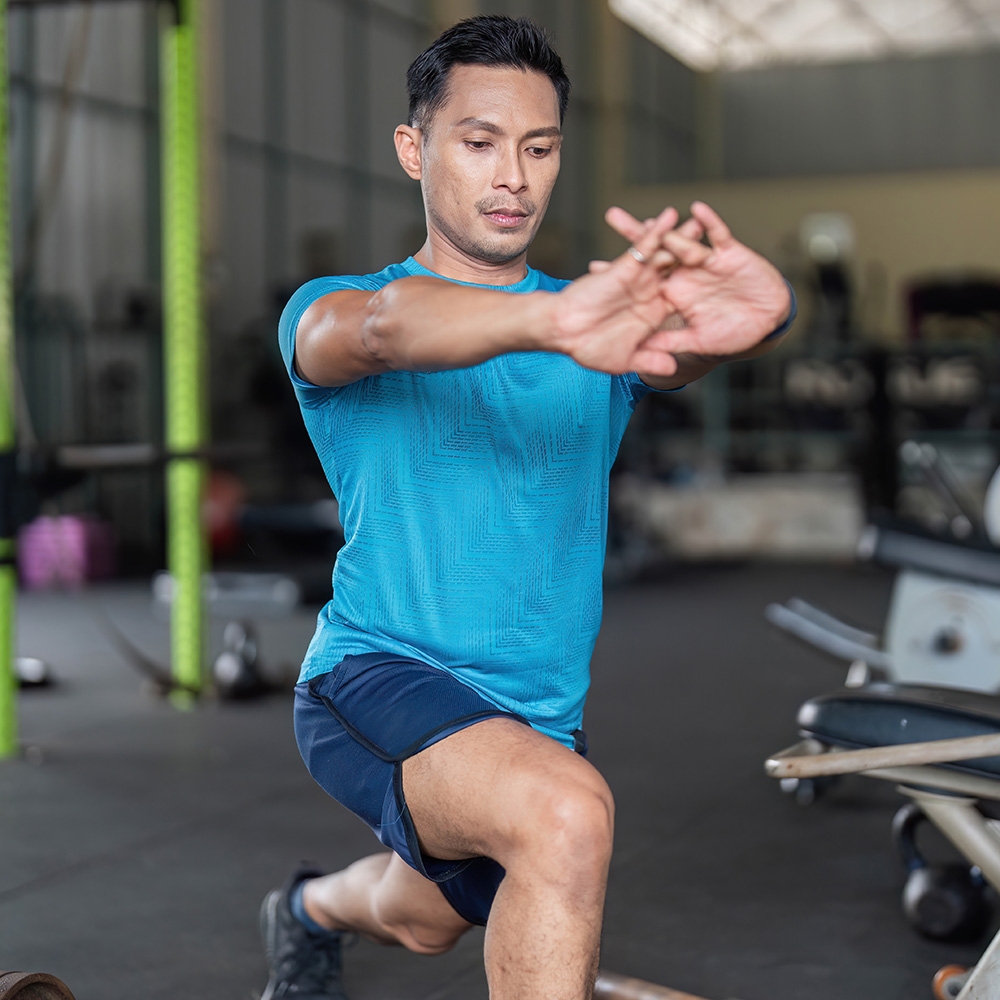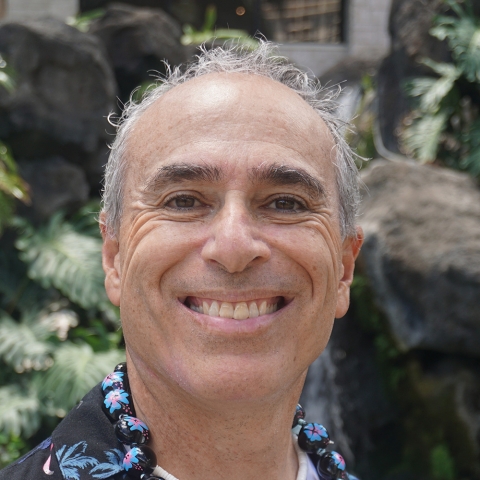
Move It to Move It: The Importance of Exercise for Full-Range Mobility
Discover how targeted movement and exercise can preserve your joint flexibility, prevent stiffness, and keep you active throughout every stage of life
Key Takeaways
- Regular exercise and purposeful movement are essential for maintaining full-range mobility throughout life.
- Joint restrictions develop from inactivity and repetitive daily habits, but targeted exercises can preserve flexibility and prevent pain.
- Different types of movement serve unique purposes, from dynamic stretching to strength training.
- The earlier you start prioritizing mobility, the better your quality of life as you age.
- Professional guidance can help address persistent restrictions or movement concerns.
Understanding What Full-Range Mobility Means
What Full-Range Mobility Means for Daily Life
Full-range mobility refers to your body's ability to move joints through their complete range of motion without pain or restriction. This encompasses everything from reaching overhead to retrieve items from high shelves to bending down to tie your shoes or pick up grandchildren. When we maintain full-range mobility, daily activities remain effortless, and our risk of injury decreases significantly.
For Honolulu residents, this means comfortably navigating the stairs at Aloha Stadium, bending to collect shells during beach walks, or reaching up to trim palm fronds in your yard. These movements should feel natural and pain-free throughout your lifetime.
The Hidden Cost of Ignoring Your Mobility
Many people don't realize how quickly mobility declines as we get older, especially without giving it any attention. As we age or become less active, our joints naturally lose flexibility. Connective tissues become less elastic, muscles weaken, and our joints may develop restrictions. What starts as minor stiffness in your 30s can progress to significant movement limitations by your 50s and 60s.
However, research consistently shows that regular, appropriate exercise can slow or even reverse many of these changes. The key is understanding that mobility maintenance is not automatic—it requires intentional effort.
How Movement and Mobility Impact Your Body
Your Joints Benefit From Movement
When you move your joints regularly through their full range of motion, several beneficial processes occur that many people never realize.
First, joint fluid increases circulation, delivering nutrients to cartilage and removing waste products. This process is similar to wringing out a sponge, where compression pushes out waste and decompression pulls in nutrients.
Second, regular movement also stimulates the production of synovial fluid, which lubricates joints and reduces friction during movement. Think of this as your body's natural WD-40, keeping everything moving smoothly.
The Domino Effect of Poor Movement
Exercise also promotes better posture and body alignment, which becomes increasingly important as we spend more time at desks or in cars.
However, poor posture from prolonged sitting creates muscle imbalances that restrict movement. When one area becomes tight or weak, other areas compensate, creating a cascade of problems throughout your body. Over time, this compounds and makes your problems worse.
For example, tight hip flexors from sitting can cause your lower back to overwork, leading to pain and stiffness that affect how you walk, stand, and even sleep.
Essential Exercises for Maintaining Mobility
Dynamic Stretching for Joint Health
Dynamic stretching involves moving joints through their range of motion while the body is in motion. Unlike static stretching, where you hold a position, dynamic movements prepare joints for activity while maintaining flexibility. These exercises are particularly effective because they mirror the movements you use in daily life.
Effective dynamic stretches include:
- Arm circles and shoulder rolls to maintain overhead reach
- Leg swings in multiple directions for hip flexibility
- Torso twists and side bends for spinal mobility
- Walking lunges with rotation for functional leg strength
- Hip circles and knee lifts for lower body preparation
Strength Training That Supports Movement
Strength training supports mobility by ensuring muscles can control movement throughout the entire range of motion. Many people mistakenly believe that building muscle makes you less flexible, but the opposite is true when done correctly. Weak muscles cannot adequately support joints, leading to compensations and eventual restrictions.
Focus on functional movements that mirror daily activities rather than isolated muscle exercises. Full-body movements like squats, lunges, and pushing and pulling exercises build strength that translates to real-world activities.
Gentle Practices for Long-Term Health
Mind-body practices like yoga and tai chi combine flexibility, strength, and balance training while emphasizing controlled, flowing movements. These practices excel at maintaining joint mobility while promoting body awareness and proper movement patterns. They're also sustainable activities you can continue throughout your lifetime, making them excellent long-term investments in your health.
Addressing Common Mobility Challenges in Honolulu
The Office Worker's Dilemma
Many Honolulu residents work in office environments, from downtown high-rises to government buildings, spending hours each day in seated positions. This lifestyle creates predictable mobility problems that worsen over time if not addressed.
Office workers commonly develop:
- Tight hip flexors from extended sitting periods
- Rounded shoulders from forward head posture at computers
- Neck tension from screen work
- Weak glutes and core muscles from lack of activation
- Ankle stiffness from limited movement throughout the day
The good news is that these problems respond well to targeted exercises and movement breaks. Even small changes in your daily routine can prevent these restrictions from developing or help reverse existing problems.
Active Lifestyle Challenges
Honolulu's year-round outdoor weather encourages active lifestyles, but repetitive activities can create their own mobility challenges. Surfers may develop shoulder restrictions, golfers often experience back stiffness, and runners frequently deal with hip and ankle limitations.
Cross-training with varied activities and maintaining a consistent stretching routine helps prevent overuse restrictions while keeping you active in the sports and activities you love.
Age-Related Changes You Can Influence
As we age, certain changes in joint structure and muscle mass are inevitable. However, research demonstrates that appropriate exercise programs can significantly improve mobility and reduce fall risk in older adults. The key is starting before problems develop and maintaining consistency throughout your lifetime.
Low-impact activities, particularly beneficial for aging adults, include swimming, walking, gentle resistance training, and flexibility work. Hawaii's warm climate makes these activities accessible year-round, providing a significant advantage for maintaining an active lifestyle as you age.
Creating Your Mobility-Focused Exercise Routine
Starting Where You Are
An effective mobility routine should address all major joints and movement patterns without being overwhelming. Many people avoid starting because they think they need complex equipment or hours of free time. The reality is you can do a lot with little time or equipment.
Begin with gentle warm-up movements to prepare joints for activity, then include exercises that move joints through their full range of motion in all directions. Focus on areas where you feel restricted or spend time in fixed positions during your daily activities.
The Power of Consistency Over Intensity
Consistency matters far more than intensity when building mobility habits. Even 10-15 minutes of daily mobility work can yield significant benefits over time. This is much more effective than sporadic hour-long sessions that you can't maintain consistently.
Choose the same time each day to build the habit, whether that's first thing in the morning, during lunch breaks, or in the evening. Start small and gradually increase duration as the routine becomes automatic.
Listening to Your Body's Signals
Movement should feel good and gradually improve over time. You should feel a gentle stretch or mild muscle fatigue, but never sharp pain or significant discomfort. Pain or sharp discomfort indicates the need to modify your approach or seek professional guidance.
Pay attention to how your body responds day to day. Some stiffness after starting a new routine is normal, but persistent pain or worsening restrictions warrant professional evaluation.
When to Seek Professional Support
Recognizing When You Need Help
While exercise forms the foundation of mobility maintenance, some situations benefit from professional intervention. Many people wait too long to seek help, allowing problems to become more complex and harder to resolve.
Consider professional help when experiencing:
- Persistent pain lasting more than a few days
- Significant movement restrictions affecting daily activities
- Concerns about proper exercise technique or safety
- Issues from previous injuries that continue to cause problems
- Uncertainty about where to start with mobility work
Professional Options for Honolulu Residents
For Honolulu residents dealing with mobility restrictions, several healthcare professionals can provide guidance and treatment. Chiropractors specialize in joint function and can identify restrictions that may not respond to exercise alone. They can also teach proper movement techniques and provide hands-on treatments when necessary.
Physical therapists excel at designing specific exercise programs for individual needs and helping people recover from injuries while preventing future problems. The key is finding providers who understand your lifestyle and goals.
Integrating Professional Care with Self-Care
Professional treatment works best when combined with consistent self-care. Healthcare providers can identify and address restrictions, but maintaining the improvements requires ongoing effort on your part. This partnership approach provides the best long-term outcomes.
Building Long-Term Mobility Habits for Island Living
Making Movement Part of Daily Life
Successful mobility maintenance requires integrating movement into your daily routine rather than treating it as a separate activity. Honolulu's walkable neighborhoods and outdoor spaces provide natural opportunities for movement throughout the day.
Simple strategies include parking farther away to increase walking distance, taking stairs instead of elevators when available, and setting reminders to stand and stretch during long sitting periods. Use daily activities like gardening, cleaning, or walking the dog as opportunities to move your body through various ranges of motion.
Embracing a Preventive Mindset
Consider movement a form of preventive healthcare rather than just exercise. Regular mobility work now prevents more significant problems later, potentially saving you from pain, medical expenses, and loss of independence as you age.
This perspective helps maintain motivation even when progress feels slow. Remember that you're investing in your future quality of life with every movement session, ensuring you can continue enjoying Honolulu's active lifestyle for years to come.
Adapting as You Age
Mobility maintenance is a lifelong process that should evolve as your needs change. What works in your 20s and 30s may need adjustment in your 50s and beyond. The key is staying flexible in your approach while maintaining consistency in your commitment to movement.
Remember that mobility exists on a spectrum. You don't need perfect flexibility to enjoy an active, pain-free life. Focus on maintaining the range of motion necessary for your daily activities and recreational pursuits, adjusting your goals as needed while never giving up on the process.
The investment you make in movement today pays dividends for years to come. By prioritizing exercises that maintain full-range mobility, you're choosing to age actively and independently. Whether you're just beginning your mobility journey or looking to enhance your current routine, remember that every step counts. Start where you are, use what you have, and do what you can. Consistent, purposeful movement remains one of the most powerful tools for maintaining lifelong mobility and overall health in beautiful Honolulu.

